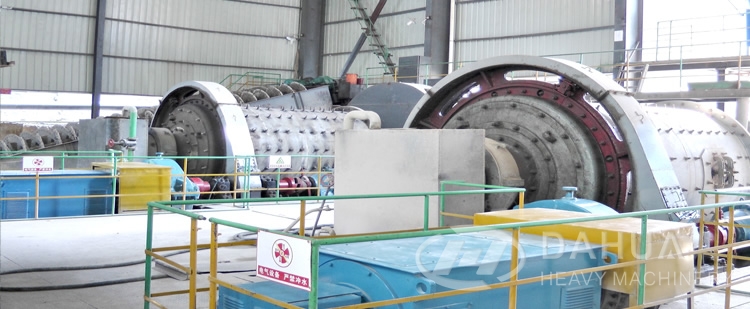When the temperature of shaft of the ball mill rises, the color of the main shaft will turn into dark grey and become sticky. This is due to the reasons of partial temperature rises. At this time, we need to make a clean of the sleeve of the main shaft. Sometimes the main shaft becomes shiny, this is due to the reason of using disqualified lubrication, which contains two much impurities. Such lubrication should be changed immediately.
Temperature of the ball mill machine rises but there is no sticky phenomenon. This may be caused by below reasons: one is the insufficient supply of the lubrication with little stickness that cannot form the oil film. Second, the quality of the oil is not good. Third, the quality of the sleeve cannot meet the standard requirement. The gap of the sleeve is too small. Fourth, there is congestion of the cooling water circuits. Corresponding measures could be taken respectively to solve these problems.

Lubricant temperature of the ball mill machine is gradually rising. There are alloy traces are formed outside of the hollow neck shaft surface. Some deep trace can be as long as 2mm with uneven density. This is caused mainly because the smoothness of the hollow neck shaft is not enough, which get scrap by parts movement. Alloy molecules are stuck onto the surface of the hollow neck shaft, which will drive to the upper part of the machine with its rotation and it will mixed by the cooling lubricants. Consequently intensify its hardness. When the molecules go downward, the molecules scrap the parts and left the uneven trace with different depth.
One side of the sleeve’s temperature rises. This is due to the misadjustment of the sleeve block, which narrow the interactive surface between the hallow shaft neck and increase its working loading. We need to lift up the cylinder of the milling machine and check the back of the sleeve. When it is necessary, we need to readjust the sleeve block and sleeve back. Meanwhile, we need to scrap the inner part of the sleeve and have the oxide layer removed. And polish the sleeve by oil.

